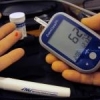Leaderboard
Popular Content
Showing content with the highest reputation on 07/28/2013 in all areas
-
Your advice has been noted and will be promptly ignored. I've made my decision. This is what I want to do.2 points
-
It could be a crime scene as well, so you much make a decision as to how to proceed based on the individual situation. Some shaken baby cases are played off as SIDS and you should always be analyzing the scene for suspicions and make a decision from there.1 point
-
So, he didnt get his am meds? IV hydralazine for the pressure IV furosemide Stats cxr Does this hospital have an ICU? Respiratory therapists? Respiratory status likely due to not receiving his asthma, copd/asthma and chf. BP/HR likely d/t missing his AM beta blocker/antihypertensives. Probably totally off on this, but it may stabilize him long enough to get a bird available or get a critical care team to ground transport to a ct hospital.1 point
-
you are a good person Richard, you take care of your family, you are honorable. May your family do well into the future !1 point
-
Working a code on someone obviously dead gives the family false hope, is unprofessional and is abusive to the body. I am sure it does not help with their grieving.1 point
-
1 point
-
In my service anyway, we don't do CPR just for show. We've had some good training around death and dying, grief management etc, and the message that keeps getting given to us is be honest with people and don't give them a false sense of hope. If I get on scene and the patient is obviously dead, I do my assessment and then tell the family that their loved one has died today. At that point, they become my patient now and I'm there to support and help them.1 point
-
There is some literature out there that may be used for or against a provider. http://www.ccjm.org/content/79/11/761.full I suppose if we get this wrong Lee will Su us...... (see original tattoo)1 point
-
Don't forget, in theory the clot is no longer there since we gave tPA. Look at the whole picture and try not to focus on one number. The hypertension may have nothing to do with the brain. There is a cardiac issue at play here too.1 point
-
I'm classifying it as a no way, no how am I transporting this patient until he is more stable and I have a medic on board1 point
-
Just because you have bleeding doesn't mean you will have increased ICP so you won't see Cushing's triad. It's not exactly peer reviewed science but gives a good explanation: http://stroke.about.com/od/strokesignsandsymptoms/a/stroknathistory.htm That being said, I am at a loss for the tachycardia. Could it be afib? Sure. Could the pt throw a clot and have a second stroke? Sure.1 point
-
So question.... why would this be hemorrhagic vs ischemic? Just based on the history of tPA? I didn't think you would see a BP THAT high with hemorrhagic. I'm not really seeing any signs of cushing's triad either indicating to me that the ICP isn't rising as it would with a hemorrhagic right?1 point
-
I agree that anyone we care for should be treated with respect (unless they have given us a reason not too). As you say, most legitimate gun owners are reasonable and if you explain that for safety reasons both EMS and the hospital have a no-gun policy and aren't a dick about it, I would imagine they would be pretty understanding. Now if you are dealing with someone from the Limbaugh crowd, just tell them that Obama wants them to bring their gun in the ambulance and the hospital and they will gladly give it up.1 point
-
OK, my comments: 1- This only becomes a big deal if we make it a big deal. As I live/work in Idaho, we encounter this a fair amount and ITS NOT A BIG DEAL. 2- Most CCL/CCW owners are very mindful and knowledgeable of the law, public safety, and are very sensitive to discrimination and constitutional issues. …often many times more so than the average EMS provider. So, trying to be badge heavy no-it all will not work out to a good patient rapport. 3- Exactly what you do will depend on your location. In a very rural area (like most of Idaho) waiting for LEO is not practical. so, when possible , I like to express alternatives. Possible acceptable solutions: If there is a sober adult with the patient, then they can take charge of the weapon. if there is not a sober adult present, and you feel comfortable, render the weapon safe (open the bolt/slide, remove the mag, engage the safety, etc). If you dont feel comfortable, it is perfectly acceptable to have the patient (assuming he is sober and cooperative) render the weapon safe for you. I usually do this when he is removing it. from his person. A third option is to lock it up in the vehicle or in the house. I am a little reluctant on this only if it is not secured in something that LOCKS, like a gun safe or similar device. I would rather give it to a person. But that just me. I have done both with no problems. Finally, if you have no other options, you can render it safe and transport it in an outside compartment or (as in our case) in your narc box (ours is also a gun vault.). This is what I usually have to do If I discover a weapon during transport (, knife, pistol, bible, whatever) anyway When possible I store it in the holster (assuming there is one..most legit gun owners carry in some kind of holster) both for protection of the finish and/or an added layer of safety. What I do not do: Give the weapon to a juvenile, a non-sober friend, or leave it unsecured on the scene. Transport a weapon that isa not rendered safe. Allow the patient to keep the weapon physically on him. I am polite, and I explain the alternatives, and I let the patient make a choice. One of the "choices" he can make is to go to the hospital by other means. I have not had anyone chose another option. I never leave a weapon where it ay be easily accessed by a minor or a child. In that case, and if the patient has no other alternatives, then I call LEO to secure the weapon. I have only had this happen once. Dad was having a serious medical emergency and his 14 year old son was in the house. Fortunately we in suburbia so LEO arrived quickly and was very understanding. One final comment: Obviously having an LEO seems to be the best solution, but over the past several years the increasing gustopo nature of the anti-gun crowd and unjust ways some restrictive gun laws have been enforced would make many normally docile gun owners become very upset. Without getting into politics , look at the criminilazation of gun owners on Colorado and New York just over magazine size. At the stroke of midnight previously law abiding citizens were made criminals, and many more are afraid of the same thing happening to them. This has made many law abiding well intentioned gun owners very distrustful. No one wants to have a medical emergency and suddenly end up in legal trouble. Letting the gun owner you are respectful and supportive of his rights, and looking to find alternatives with the LEO being the last option, is IMHO a good aproach.1 point
-
Hello, First, thank you for posting a scenario. It is a little crazy that a CVA patient was transfer back to a small community hospital from the stroke centre so fast. Thrombolytic CVA can convert to a hemmorrhage hemorrhagic at the 24-48 hour mark. Basically, the ischemic tissue dies and a bleed can result. This is the same reason the ischemic changes do not show on a Head CT for the first 24 hours. This could explain the new neurological finding and the HTN. HR=190 What dose the monitor show? Also, what is the code status/ level of intervention? lastly, this is not a BLS transfer. Thank you,1 point







